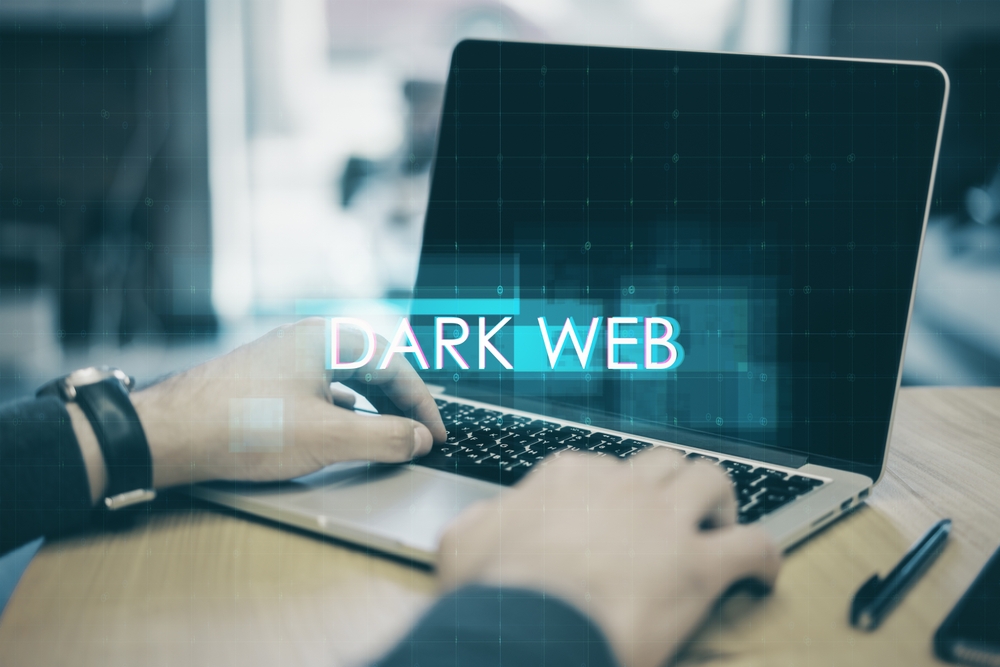
With the threat landscape expanding every day, businesses must look beyond traditional cybersecurity measures. The dark web—an anonymous portion of the internet hidden from standard search engines—has become a thriving marketplace for stolen credentials, financial information, and corporate secrets. As companies continue to digitise their operations, the value of their data only increases, making them prime targets for cybercriminals.
One overlooked but increasingly vital security tool is dark web monitoring. It allows businesses to track if sensitive data has been leaked or is being traded online, offering a valuable line of defence in a world where cybercrime is a daily reality. This blog explores the vital importance of monitoring the dark web and why it’s essential to a well-rounded cybersecurity approach.
What Is the Dark Web and Why Is It Dangerous?
To understand the importance of monitoring the dark web, it’s crucial to grasp what it is. The internet can be categorised into three layers:
- Surface web: The visible part accessed by standard browsers and search engines.
- Deep web: Content not indexed by search engines, such as login portals and databases.
- Dark web: A small portion of the deep web accessible only through special tools like Tor. It is intentionally hidden and anonymised.
The dark web is infamous for its role in illicit activities. Cybercriminals use it to buy and sell:
- Compromised email addresses and login credentials
- Bank account information and credit card data
- Intellectual property and company databases
- Malware kits and hacking services
The anonymous nature of the dark web allows these transactions to happen without accountability, making it a breeding ground for corporate exploitation.
What Is Dark Web Monitoring?
Dark web monitoring is a cybersecurity service that scans dark web forums, marketplaces, and data dumps for compromised company information. It proactively identifies if sensitive business data is circulating among malicious actors.
These tools work by:
- Continuously scanning hidden sites, paste bins, and dark web directories
- Alerting businesses when stolen credentials or financial data are discovered
- Monitoring for specific keywords like company names, email domains, or system credentials
Some examples of monitored data include:
- Employee email addresses
- Password hashes
- Financial records
- Software licence keys
- Customer account numbers
The goal is simple: discover threats early, take action swiftly, and avoid damage.
Top Cybersecurity Threats Facing Modern Businesses
Businesses today operate in a threat-heavy environment, and failing to detect early signs of compromise can be catastrophic. The dark web contributes to various types of attacks, including:
- Data Breaches: Once data is stolen, it’s often sold or posted online. Hackers can then repurpose it for future attacks.
- Credential Stuffing: Criminals use stolen login credentials to access multiple systems, banking on people reusing passwords.
- Identity Theft: Employee identities can be stolen and used to create fraudulent accounts or authorise fake transactions.
- Business Email Compromise (BEC): Fake emails crafted using real data deceive staff into transferring funds or data.
- Financial Fraud: Misuse of leaked banking or client information can lead to direct financial losses and reputational damage.
These threats show how critical early detection is—and that’s where dark web monitoring plays its part.

How Dark Web Monitoring Mitigates These Risks
Dark web monitoring services act like an early warning system. When integrated correctly into your IT strategy, they:
- Detect Leaks Before They Cause Damage: Immediate alerts allow businesses to change credentials and tighten security before threats escalate.
- Prevent Account Takeovers: Monitoring detects if a password or token is compromised, helping stop attackers from logging in as legitimate users.
- Limit Recovery Costs: Discovering a breach early can prevent full-scale attacks, saving thousands—or even millions—in mitigation expenses.
- Protect Your Reputation: A data breach can damage trust. Monitoring helps businesses act before an issue becomes public knowledge.
Overall, dark web monitoring offers a strategic layer of prevention that no company should ignore.
The Relevance of Dark Web Monitoring in the Financial Sector
Among all industries, financial services face some of the most complex and costly cybersecurity threats. They handle sensitive data daily—client portfolios, payment records, personal identification—and that makes them ideal targets.
In this high-stakes environment, Financial Services IT Support plays a crucial role in maintaining operational security. From banks to insurance firms, incorporating dark web monitoring into IT infrastructure is no longer optional—it’s vital.
Benefits for financial institutions include:
- Meeting regulatory expectations for data protection
- Monitoring for leaked client data and financial records
- Securing internal systems from third-party data exposure
- Enhancing incident response protocols
When integrated into robust Financial Services IT Support, dark web monitoring complements encryption, multi-factor authentication, and threat detection to create a stronger cybersecurity perimeter.
Integrating Dark Web Monitoring into IT Security Strategies
Dark web monitoring is most effective when treated as a component of an overall cybersecurity framework, not a standalone tool. It should be integrated with:
- Endpoint Protection: Ensuring that employee devices are protected if credentials are compromised
- Firewall & Antivirus Systems: Blocking suspicious IPs and scanning for malicious payloads
- Regular Vulnerability Assessments: Identifying weak entry points before attackers do
- Employee Awareness Training: Teaching staff to recognise phishing attempts and adopt strong password habits
Businesses with tailored Financial Services IT Support often combine dark web monitoring with cloud access security brokers (CASBs), identity management systems, and security information and event management (SIEM) tools.
When monitored information is detected on the dark web, the response must be immediate and coordinated—changing passwords, informing clients (if needed), and updating access protocols.
Features to Look for in Dark Web Monitoring Services
Not all dark web monitoring tools offer the same functionality. When evaluating services, businesses should consider features such as:
- Real-Time Threat Detection: Immediate notification allows for faster incident response.
- Automated Alerts: Email or dashboard notifications when your data appears in leaks.
- Customisable Monitoring: Ability to track specific domains, IPs, or user credentials.
- Integration with Existing Security Tools: Ensures seamless security operations.
- Scalability: Must handle increased data flow and user growth as businesses expand.
Prioritising these features ensures your investment provides long-term value and meaningful threat protection.
Avoiding Common Pitfalls When Using Dark Web Monitoring
While dark web monitoring is powerful, it can fall short if mismanaged. Common pitfalls to avoid include:
- Over-reliance on Technology: No tool replaces the need for human oversight and decision-making.
- Ignoring Alerts: Receiving a notification is only helpful if it prompts swift action.
- Lack of Employee Awareness: Monitoring can’t help if internal password hygiene is poor.
- Neglecting Broader Cybersecurity Hygiene: Monitoring must be part of a layered defence strategy.
A proactive approach—one that includes training, technical tools, and policy enforcement—is key to effective protection.
Conclusion
Cyber threats evolve daily, but the dark web remains a constant source of risk. For modern businesses, especially those handling sensitive financial data, integrating dark web monitoring is essential.
Paired with intelligent IT strategies and expert Financial Services IT Support, this service becomes an indispensable asset for maintaining security and trust in the digital age.
To strengthen your defence against hidden threats and implement a comprehensive monitoring solution, trust the expertise of Renaissance Computer Services Limited—your partner in intelligent cybersecurity.